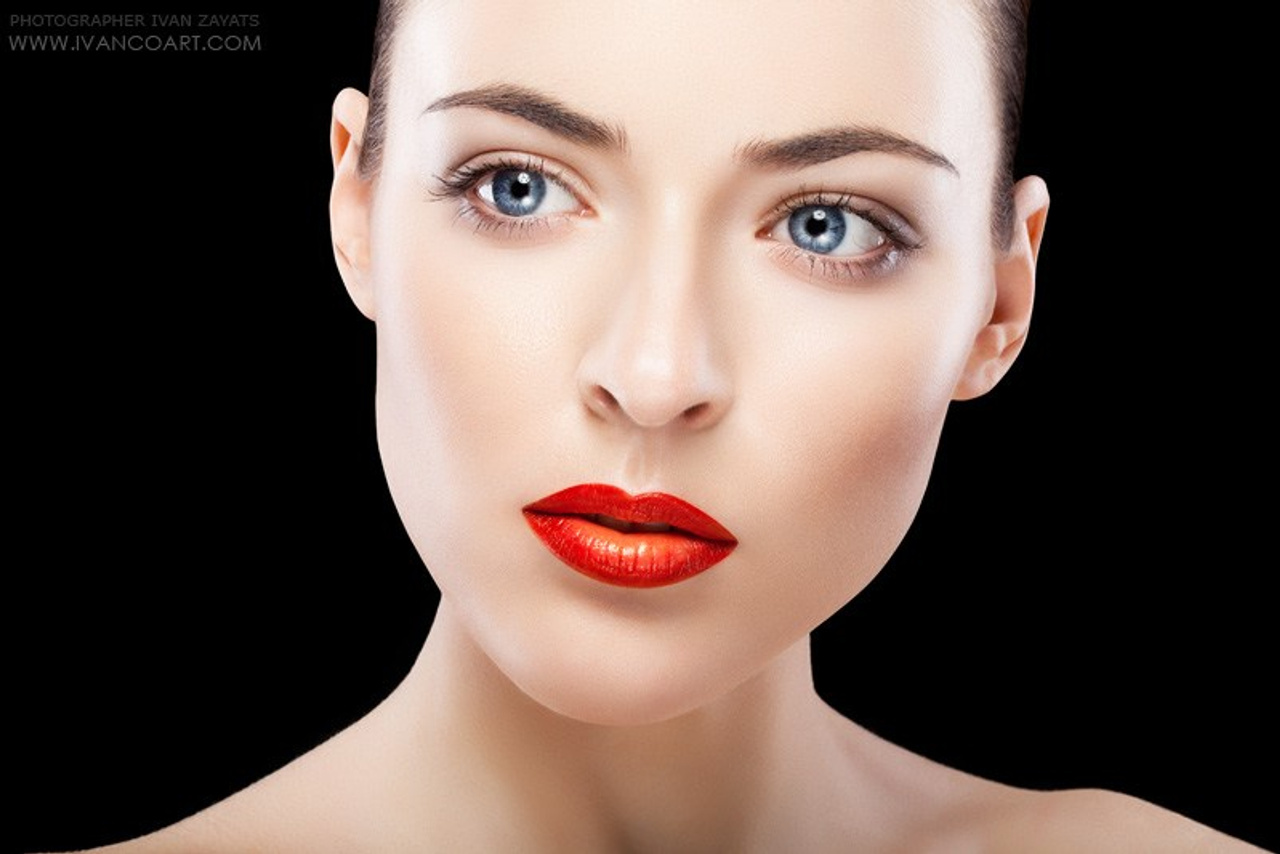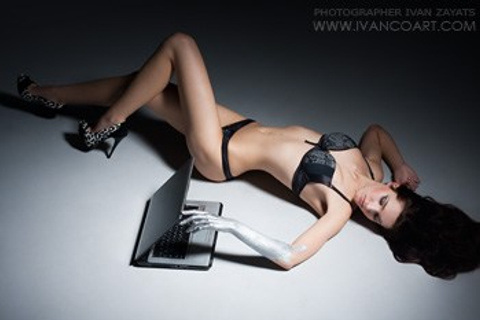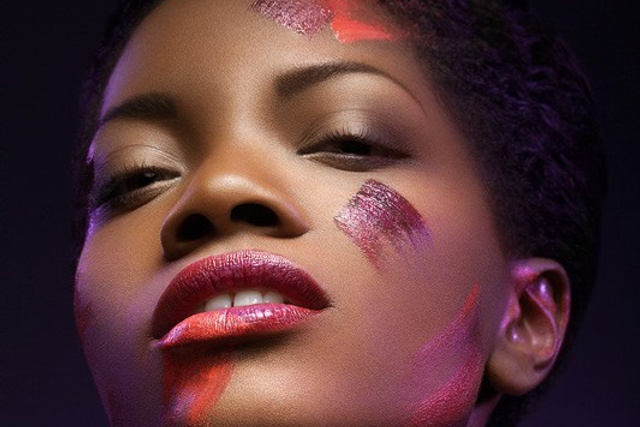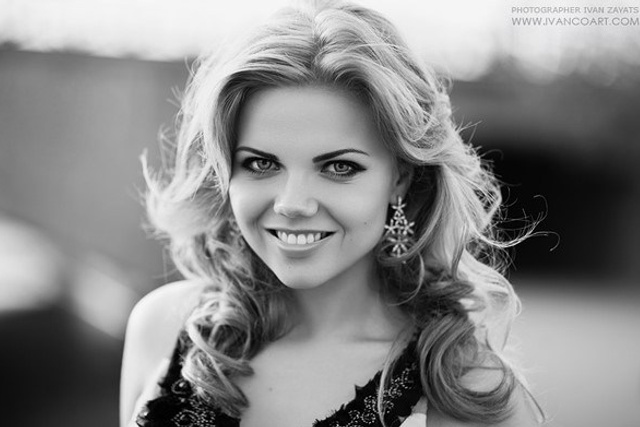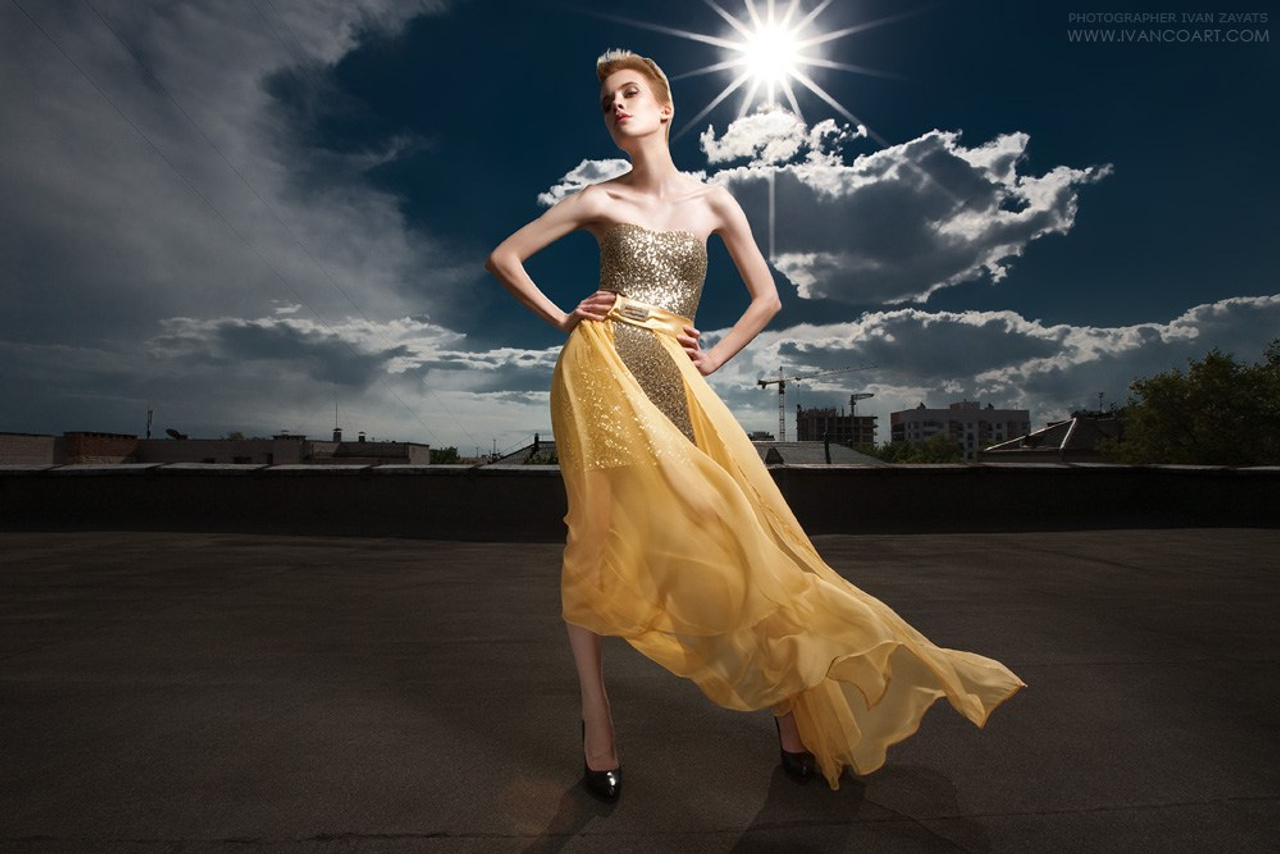This article is written for potential clients and is intended to give a detailed overview of high-end retouching, including its cost. If you want a quality final product after the photo shoot, it’s important to delve into pricing.
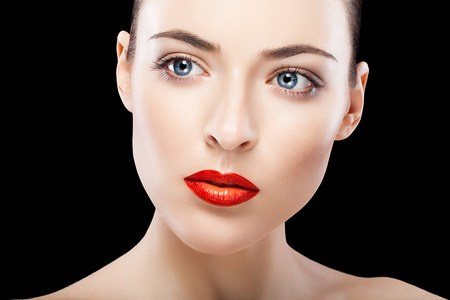
High-end retouching
First, let’s find out what retouching is in general. Retouching is the modification of the original image in order to improve it, including: elimination of skin defects (pimples, wrinkles, shadows under the eyes, redness, etc.), correction of the figure, hairstyle, facial shape. In addition, it may include replacing the background, recolouring certain parts (e.g. changing the colour of hair, eyes, clothing) and general colour correction.
Where is high-end retouching used? Mainly in advertising — magazine publications, billboards. Most often these are studio fashion and beauty shots, as skin imperfections are less visible in street photos.
So what is the difference between high-end and “regular” retouching?
The editing methods and the amount of time it takes. High-end retouching often requires 2-3 hours per image and is done carefully and painstakingly. Therefore, the result tends to look very realistic, as if it was originally shot that way. In the past, looking at quality processed photos and not seeing the originals, I used to think: “Where did the photographer find such wonderful models with perfect skin? How lucky s/he is!”
The skin is retouched while preserving its texture, which takes the most time (especially close-up studio portraits in beauty style). Correcting the shape of the face and body is relatively easy, but you need to have a sense of proportion and taste not to overdo it. It can be difficult to realistically replace the background if there is waving hair and/or stray hairs that need to be carefully cut out. But skilful retouchers do a great job with it, and some editing wizards even redraw the major part of the hairstyle, adding volume and gloss. It’s done with a pen and a graphics tablet. Remember commercials for shampoos and hair dyes? Be sure that a professional retoucher has carefully worked on each advertising image.
Hair retouching
This is one of the most painstaking types of retouching, much depends on the hairstyle and the quality of its execution. The retoucher’s fee for a single shot can be equal to the hairdresser’s fee for the entire shoot. When shooting beauty portraits in the studio, forget the phrases “I’ll do my own hair/makeup” or “you can fix it later in Photoshop”. Either fools or rich people can afford such remarks. However, among wealthy people who have earned money with their own brains and hard work, there are very few stupid ones. Remember: you need to work rationally on the set, not carelessly (as many people do).
Cheap retouching
Сheap retouching is immediately noticeable, even if we haven’t seen the original photo. Because it’s done quickly and not very carefully. The methods used are aimed mainly at saving time rather than producing a quality result. I mentioned above that retouching should enhance the original image, but cheap retouching often gives the opposite result.
Speaking of skin editing, its texture is not preserved, but simply washed out, as a result it looks like plastic or wax. This is done with filters and plugins that professional retouchers never use. Usually this “retouching” is offered by beginners and amateurs. Sadly, many clients are satisfied with it, although it looks unnatural, unaesthetic and simply tasteless.
Examples
Here is a part of a retouched beauty image. As you can see, all the texture of the skin has been preserved — that’s the goal of high-end retouching. Ideal skin does not exist: pimples, wrinkles, age spots — everyone has all this to some extent. Another thing is that in real life this is not as noticeable as in close-up static photographs, especially studio ones (shot with a macro lens with harsh bright light).
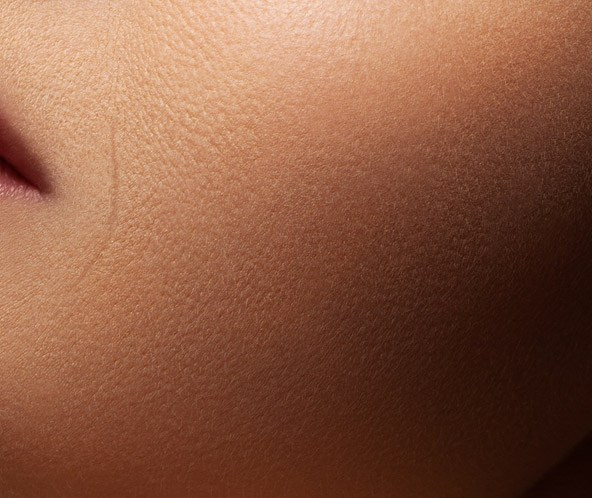
Now have a look at the same fragment but with cheap (poor quality) retouching.
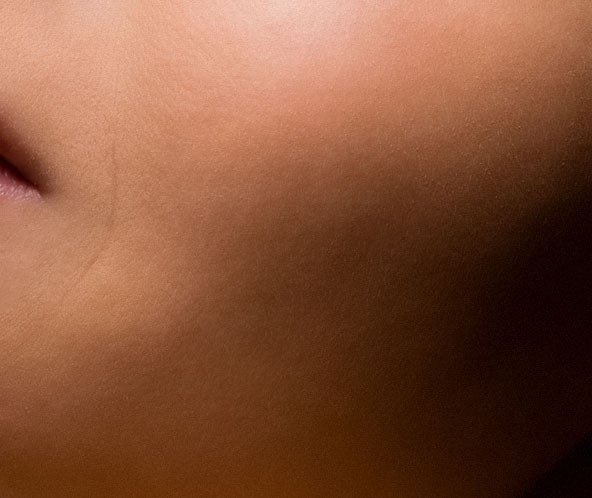
The texture of the skin here is just blurred, washed out. This is often done semi-automatically and takes only a few minutes. Just feel the difference. Such disgrace cannot even be called retouching, rather just cheating.
However, so do many photographers and retouchers, and not only beginners — some because of laziness, others because of lack of knowledge and inability to do this work properly. The reason is the ignorance and unpretentious tastes of the clients, who do not understand what is “good” and what is “bad”.
How much does it cost?
Having a great experience of communication with retouchers from different parts of the world, I would like to note the following. Prices for any job depend on the region of residence. Freelancers from low-income countries can afford to set lower prices. Often (but not always) a lower price equals a lower level of skills and quality. Experienced and proficient retouchers can set a higher price, even living in a poor region.
Let’s talk about numbers. People from India and Bangladesh offer the lowest prices, around $1—5 per image, but the quality is very low as well. Frankly, I can’t call it retouching at all, just blurring skin as in the sample above. In Eastern European countries and Russia, prices range from 10 usd to 30 usd per photo. In Western Europe and the United States — from $50 and can go up to a hundred dollars, or even several hundred. The upper price range is usually applied when it comes to photos for advertising — the price is driven primarily by the commercial use of the images, then by the complexity of the retouching itself. The most tedious and expensive is beauty retouching, hair editing and collaging (compositing).
Photographer ≠ Retoucher
It should be emphasized that retouching is a separate profession, post-production is not a photographer’s task at all. To be clear: photographer and retoucher relate in the same way as makeup artist and hairdresser, singer and composer. Yes, there are smart generalists who are good at several professions, but they are extremely few. For example, can you think of 10 successful singers who perform their own songs (i.e. write both music and lyrics)? It’s a little complicated. What about just 10 performers? Easy.
Personally, I’m for division of labor and I believe everyone should do their own job. On the other hand, if a photographer has enough free time, he can learn retouching as well. But it will take months and years of practice — just like mastering any other profession. And, of course, this hard work should be paid for by the client separately, regardless of who does it.
However, more often we see how most photographers simply spoil their already weak images with poor cheap processing (see the example above), without making proper effort to achieve quality result. As a rule, they work in the lower price segment, oriented to the ignorant client, putting quantity over quality.
Things to keep in mind
Unfortunately, the term “high-end” (as applied to retouching, at least) has been completely discredited over the last decade — it’s used even by amateurs and beginners who downloaded Photoshop a few weeks ago and produce absolute soapy trash in five minutes. Their methods and results have nothing to do with quality retouching. So why devalue the term itself in such a way? They probably think that stupid clients will believe the label “palace” on a leaning old barn. Whereas top retouchers and studios now try not to use that word. So you should look at the portfolio and price first.
High-quality retouching of close-up portraits can hardly cost less than $10 per image. If you are offered it significantly cheaper, there is reason to be suspicious. Would an experienced professional waste time for a ridiculous amount of money? How much will a retoucher earn per month? Do some simple calculations and it will immediately become obvious that you shouldn’t expect quality results for $1-2.
Carefully look at the portfolio and compare the prices and quality of the retouching services. For example, if a photographer offers a shoot for $100 and promises 30-50 “retouched” photos, it is immediately clear what level of the production would be. And if this includes the work of a makeup artist and renting a studio, then everything is even worse.
The concept of “retouching” is often replaced with the more abstract word “editing” (I often see this on photographers' websites in their packages). If somebody offers dozens of edited photos, most likely it’s not about retouching at all, but some kind of batch processing with presets, filters and plugins. Because editing can refer to any manipulation with the original photo. In the best case it means general color correction, in the worst — it may be adding some “special effects” and “blurring” the skin.
P. S.
I would like to emphasize once again that in order to get a decent result, ALL the team must work hard. A photographer and makeup artist have no right to work carelessly, hoping their mistakes will be fixed by a retoucher. Yes, retouchers can do a lot, BUT should they? Ironing a dress, fixing hair, removing some trash from the background — all of these things need to be done before pressing the camera button. An action that takes only a few moments on set will take tens of minutes for a retoucher, and, accordingly, tens of dollars for a client. This is extremely irrational.
Ideally, we should only fix in Photoshop what is impossible or extremely difficult to fix before/during the shoot. For example, in beauty photography it is mainly skin cleanup. Makeup will not completely hide wrinkles, as they have volume, but a photographer can either smooth or emphasize them with light (making it easier or harder job for a retoucher). Photographers who do their own retouching understand: the more you work with your brain on a shoot, the less effort you have to put into retouching. This disciplines very well.
If the originals are initially bad, even a very skillful retoucher will hardly help or it will be very expensive and impractical. All retouchers say this, but for some reason many clients don’t realize it when they ask to refine poor quality photos. One thing is to eliminate just skin imperfections, which are minimized by the proper light and makeup, and quite another to correct the photographer’s mistakes (in lighting, composition, etc.), to redraw the collapsed hairstyle and smudged makeup.
Remember: for the best final result you need the highest quality originals straight out of camera. Therefore, saving on a photographer, makeup artist and hairdresser, relying only on a retoucher, is simply stupid! However, you can’t save on retouching either — the golden mean is important here, because if you underpay one of the team members, you will certainly overpay the other. Contact skilled professionals and get the results you deserve!
Good luck with your photos!
Author: Ivan Zajats ©
Full or partial reproduction of the article on other sites without an active link to this page
is prohibited and will be prosecuted. Reposts are welcome.

